Off The Bookshelf: Horton Hears a Who!
Since last week’s post was dedicated to the amazing children’s author Dr. Seuss, I wanted to follow it up with a post about one of his many wonderful books. However, the more I thought about it, the more I realized how hard it would be to choose which book to feature; there are so many good stories by Seuss that it’s almost impossible to choose just one favorite. Eventually, though, I settled on one of the books I find most inspiring: Horton Hears a Who!
Summary
First published in 1954 by Random House, Horton Hears a Who! tells the story of Horton the Elephant, a resident of the Jungle of Nool, and his quest to help the Whos. After hearing a small yelp coming seemingly out of thin air, Horton discovers the microscopic civilization of Whoville living on a speck of dust. Deciding that every life has value regardless of size, he places the speck on a clover and sets out to find a safe location to keep the Whos out of harm’s way. Unfortunately, being the only one with ears keen enough to hear these tiny people, the elephant has trouble convincing the other jungle residents that Whoville exists, and when they decide to put an end to his crazy antics by destroying the clover, Horton must struggle to save his new friends and teach the people of the Jungle of Nool an important lesson: “a person’s a person, no matter how small”.
Review
Horton the Elephant is one of my favorite Dr. Seuss characters, mostly for his kindness and integrity. He stays true to his word no matter what; as seen in the previous story featuring his character – Horton Hatches the Egg – when Horton makes a promise, he has every intention of seeing it through, and that makes him one of the best role models in Seuss’s stories.
I meant what I said
And I said what I meant.
An elephant’s faithful,
One hundred per cent!– Horton the Elephant, Horton Hatches the Egg (Dr. Seuss, 1954)
Like many of Dr. Seuss’s books, Horton Hears a Who! is more than just a children’s story. It also teaches good lessons, such as the importance of open-mindedness and understanding the issues of isolationism. Horton’s biggest challenge is convincing his peers that something they can’t perceive or fathom actually exists – which, when you think about it, is a story that’s only too familiar in real life. But what’s really interesting about this book is the history behind its lessons. Once strongly opposed to Japan, the author changed his opinions after World War II, and used this book as an analogy for the American post-war occupation, even dedicating the book to a Japanese friend. Overall, the metaphor of two worlds overlapping creates a beautiful message, one that children can certainly understand and appreciate.
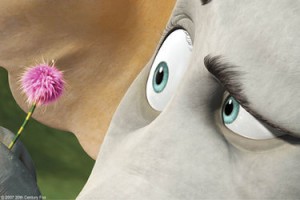
Horton and the clover, Horton Hears a Who! (2008)
Horton Hears a Who! is one of Seuss’s most notable works. From the children’s book to the TV special to the 2008 full-length feature film (which I thoroughly enjoyed; I swear the “We are here!” scene gives me chills every time I watch it), this story is wonderfully imaginative and fun for readers and viewers of all ages. Though they may have been written for a young audience, no one is too old to enjoy the stories of the great Dr. Seuss!
Inspiration
What I always found inspiring about this book was the main character’s determination to help an entire community that he couldn’t even see. I admired Horton’s devotion to his cause, and the respect he had for all forms of life made him a truly lovable hero. With colorful characters, adventure and a heartwarming message, Horton Hears a Who! is one of my favorite Dr. Seuss stories, and one I’ll definitely enjoy for the rest of my life.
Off The Bookshelf: The Mists of Avalon
Since the 9th century, the legend of King Arthur has been a well-known and popular one, spawning several myths and original retellings around the world over hundreds of years. Today, modern adaptations of Arthurian legend are hardly in short supply, from fantasy fiction portraying tales of the Knights of the Round Table to historical nonfiction seeking the truth behind the myths. Among the Arthurian fantasy novels that stand out the most, however, is Marion Zimmer Bradley’s celebrated four-part saga: The Mists of Avalon.
Summary
The novel series was first released in the United States by publisher Alfred A. Knopf in January 1983, for a targeted audience of adults, particularly women of any mature age. The Mists of Avalon tells the story of the rise and fall of King Arthur Pendragon in Britain during the late 5th and early 6th centuries, spanning across generations to narrate events from a little before his birth to sometime after his death. While it still encompasses many of the legend’s fantasy elements so well known today, the saga has a creative twist in that it relates the entire Arthurian legend from a completely different perspective: that of the female characters.
Review
As excited as any admirer of medieval fantasy fiction may be to start on a novel series with an Arthurian theme, the sheer length of this saga may prove daunting enough to warrant it a place on a summer reading list instead. This would likely turn out to be a wise decision, for one quickly discovers that Bradley’s elaborate plot, complex characters, detailed descriptions of medieval Britain, and fantastically original perspective of the Arthurian legend are capable of making the novels nearly impossible to put down for periods longer than are enough for basic necessary tasks, such as eating and sleeping. It’s arguable that enraptured readers would probably reach the end of the book well before the aforementioned list’s respective summer is over, and somehow feeling more conscious of – and respectful toward – the many possible interpretations of the story of King Arthur.
One of the most obvious themes that sets this novel apart from other Arthurian adaptations is feminism. The most widely known versions of these myths portray King Arthur and the Knights of the Round Table as the heroes of the story, while the women remain further toward the background as supporting characters with only a few key roles. In The Mists of Avalon, it’s almost exactly the opposite; Arthur and the other male characters sink into supporting roles, while the women rise up to become the protagonists in this original retelling. Readers are brought into the same world they know so well from the classic tales of King Arthur, yet at the same time, it becomes an entirely different world altogether, proving that vantage point really does make all the difference in the telling of a story.
The majority of the narrative is told from the perspective of Arthur’s half-sister: the Avalon priestess Morgaine (known as Morgan le Fay in other Arthurian tales). Many chapters are also narrated from the viewpoints of other important women, among them Arthur’s wife, Queen Gwenhwyfar (the Welsh spelling of ‘Guinevere’); Avalon High Priestess and Lady of the Lake, Viviane; and Arthur and Morgaine’s mother, Igraine. Not only are these characters graced with much longer periods in the center of the narration, but Bradley also does a wonderful job of pulling these women out of their original unidimensional roles and giving them true depth, making them worthy of protagonism. Morgaine is no longer just an evil witch or a simple healer, but a strong druid priestess with good intentions and a tragic destiny. In turn, Gwenhwyfar’s innocent Christian veil is not just a plain matter of faith, but a slow descent into fanaticism brought on by an inferiority complex, her inability to bear children, and her search for salvation from her not-so-innocent infatuation with her husband’s best knight.
Which leads into the next main theme of the book: religion. One of the basic historical aspects of the Arthurian legend is the Christianization of Anglo-Saxon England, at a time when paganism was equally common. Again, a new light is shed on the story, as the conquering over dark pagan ways by Christianity becomes more of a struggle of rising tension and intolerance of the increasingly unstable balance between religions. The matriarchal society of Avalon is cast onto the defensive side against the overbearing patriarchal Church, eventually leading into a sequence of events in which Morgaine and the pagans strive to save Avalon and their native religion from disappearing from their country’s history altogether. Obviously, such strong religious implications – as is true of many novels with similar themes, notably Dan Brown’s The Da Vinci Code and Philip Pullman’s His Dark Materials trilogy – tend to spark equally strong criticism from religious groups, likely qualifying this book for a more “tolerant” audience.
Many might argue that it takes a certain kind of reader to enjoy a story like this, which boasts a generous share of heavy mature themes, such as sexuality and political radicalism. In light of such arguments, it may be best to recommend the series to readers deemed mature enough to refrain from dwelling excessively on these superficial themes (key as they are in many parts of the narrative) and truly appreciate the central concept Ms. Bradley intended to portray in her books: a story isn’t necessarily a simple matter of black and white or good and evil, but instead may hold several truths.
Inspiration
I first read this series when I was 14, after my mother gave me the single four-part volume as a Christmas gift. Since immersing myself in the world of Avalon, this saga has inspired me for its unique take on the legend of King Arthur, a story that has always fascinated me for its fantasy themes and insights into Celtic mythology. It was interesting to read this classic tale from the perspective of the women, and I quickly became entranced by the core theme of feminism present throughout The Mists of Avalon. Looking back, I’m glad my mom considered me mature enough to read the novels during my adolescence, for they introduced me to major political and religious topics during a key stage in my development as an independent thinker, and have thus become a great inspiration for the subtexts and themes that I like to write into some of my own stories.
The Mists of Avalon is, in my opinion, a classic work of art. Whether you’re an Arthurian enthusiast, a feminist, an intellectual with a fascination for religious debate, or simply a fan of well-written fantasy fiction, you will most likely enjoy this book. And if you happen to fit into every one of the above categories – as this writer likes to think she does – you will certainly devour it in no time, and still be left hungry for more.
Off The Bookshelf: The Harry Potter Series
OK, it’s time to share another inspiring selection from my bookshelf. Because last week’s Notable Authors post was dedicated to J.K. Rowling, today’s Off The Bookshelf topic is a complementary review of her most famous works. Since I couldn’t say that only one of these books has inspired me, instead I’d like to briefly cover some general points of all seven of the author’s world-famous fantasy novels: the Harry Potter series.
Summary
First published in the United Kingdom by Bloomsbury (June 1997) and in the United States by Scholastic (September 1998), the Harry Potter series consists of seven novels primarily in the fantasy genre, written for a target audience of young readers from children to young adults. The books tell the coming-of-age story of Harry Potter, a wizard boy who gained fame in the underground wizarding world as a baby after mysteriously surviving an encounter with the Dark sorcerer who terrorized the magical community and killed his parents. The series focuses mainly on Harry’s adventures with his friends Ron Weasley and Hermione Granger at Hogwarts School of Witchcraft and Wizardry between the ages of 11 and 17, with each book taking place over one year of the characters’ lives, all strung together through a story arc about the young protagonist’s quest to unravel the mysteries of his life and ultimately destroy the power-hungry Lord Voldemort to save the magical and nonmagical worlds from his evil reign once and for all.
Review
The Harry Potter books have gained incredible success since the first publication of Harry Potter and the Sorcerer’s Stone (if you’ll forgive my use of the American title, since it’s the one with which I’m most familiar), and with such high popularity and critical acclaim, it’s easy to see why. Rowling’s intricate world, compelling characters and engaging storyline quickly drew in millions of readers worldwide, and boosted the novels to become the best-selling book series in history by mid-2011.
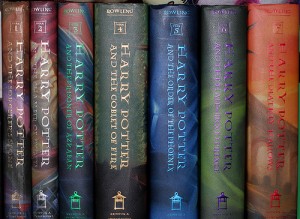
Complete Harry Potter Collection – Scholastic hardcover
(CC Image by Stephan Starnes via Flickr)
Although it’s mostly considered fantasy for its predominant theme of magic, Harry Potter also falls under such genres as mystery, thriller and coming of age. This makes it a very versatile and unique read, which may partly explain its enormous success. Despite appearing as a children’s story about wizards on the surface, the series has many levels to it that make it appealing to a broader range of readers. For instance, those who don’t care so much for fantasy might still enjoy Harry Potter as an adventure story at its core, or for its mystery elements, or even as a tale about a young boy trying to find out who he really is. Aside from its overlapping genres, the author also made a point of allowing various themes to blossom throughout her work, including the trials of adolescence, political subtexts, and especially death.
One of the most notable achievements of this series was the fact that it encouraged so many children to read. Yet there was more to it than just getting kids to pick up books they would normally consider above their reading level. As one of the children of the Potter generation, I can attest to the special experience of growing up with the main characters. I read the first book when I was very close to 11 years old and finished the last one not long after turning 17, and because of the way the series gradually progressed into darker themes with each new book, Harry Potter was the key work of literature in my transition from lighter children’s stories to more mature fiction, helping me to develop both as a reader and as a writer.
There’s no question that these books will forever be revered throughout the history of literature, not only for their record-breaking commercial success, but for their tremendous cultural impact. The series has inspired an entire generation of young readers, and it will always hold a special place in the hearts of the millions who have been touched by the magic of Harry Potter.
Inspiration
If Roald Dahl first hooked me on fantasy stories with Charlie and the Chocolate Factory, J.K. Rowling kept me forever loyal to the genre with Harry Potter. As I like to put it, “I came for the chocolate factory, and stayed for the wizarding school.”
Harry Potter has been a huge inspiration to me since my childhood, as much in fantasy specifically as in the rest of my writing in general. The books have opened my eyes to a wonderful world of fiction, and they’ve taught me a great deal about the techniques and passion it takes to create a magical universe. I’ve been an aspiring fantasy author since I fell in love with creative writing as a child, and I can honestly say that this series has played a major part in keeping my dream alive for so many years. No matter how many other novels I go on to read and even write throughout my life, the Harry Potter books are and always will be among my absolute favorites.
Off The Bookshelf: Charlie and the Chocolate Factory
So I wanted to start a section of my blog focusing on sources of inspiration, that is, what inspires me as a writer and what I hope can inspire others as artists. The first idea that came to mind was a subtopic for the books I’ve read that have motivated me in my writing, sort of like a virtual bookshelf. Then I thought, what better book to start off with than the one that first inspired me to become a writer? So here is a brief review of one of my favorite books as a child: Charlie and the Chocolate Factory by Roald Dahl.
Summary
In case you haven’t yet read the book (first published in 1964) or seen either of the movie adaptations (released in 1971 and 2005), Charlie and the Chocolate Factory tells the story of Charlie Bucket, a kind and honest young boy of very humble origins who has always been intrigued by the mysterious chocolate factory located near his home, run by the legendary Willy Wonka. One day, Charlie’s wildest dreams come true when he becomes one of only five lucky children around the world to find a golden ticket inside a Wonka’s chocolate bar, constituting an invitation from the famous chocolatier himself to visit his factory for an entire day. Fantastical adventures ensue as Charlie and the others follow Mr. Wonka on a magical tour through the strange facility, at the end of which lies a special grand prize for only one very lucky child. How will things fare for our hero and the four terrible brats as they discover the wonders of Wonka’s chocolate factory? It’s the greatest adventure of young Charlie’s life, and he can’t wait to find out!
Review
I first read this book when I was nine years old, at the recommendation of my mother. Though I was no stranger to reading, it was the first book I ever read that was written by Roald Dahl, and consequently, it became the reason he was my favorite author growing up. Charlie and the Chocolate Factory fulfilled a great wish I had throughout my entire childhood: to escape into a magical world far from the realm of reality.
As I read the story, I lived vicariously through the character of Charlie Bucket, who had the amazing opportunity to step out of his ordinary life and spend a day in a land of fantasy. Today, I look at him as an excellent role model for young children: humble, honest and with a vivid imagination. Willy Wonka is a wonderfully eccentric character, likely intended as a personification of the dreamer mentality lost on many of the “normal” adults in the author’s stories; and the four children joining Charlie on his adventure have such ridiculously bratty personalities that it can only make for some hilarious scenarios during the course of the factory tour.
But it wasn’t just the story that I loved; it was the way it was told. Mr. Dahl always had a very creative style of narrating his children’s books that appealed as much to his young target audience as to the metaphorical child in each of his older readers, and Charlie and the Chocolate Factory is no exception. Every time one of the bratty golden ticket winners gets into trouble, the situation is resolved in a unique and comical way as could only come from a mind as imaginative as Dahl’s. The songs sung by the factory’s Oompa Loompa workers are not only funny, but actually teach valuable lessons, though it’s safe to assume the advantages of reading over watching television and the prominent role that parents play in raising spoiled children are already common knowledge. Even the various candies and chocolate delights described throughout the story sound so delicious and inventive, you wish you could reach into the pages and try some for yourself (except maybe the chewing gum).
Inspiration
Though I was already a longtime fan of fiction, this was the first book to make me want to write stories of my own. The joy I felt when escaping into Charlie’s world inspired me to follow Mr. Dahl’s lead and create magical adventures for others to enjoy, and for that, I will always admire him as one of my all-time favorite authors. With its wild twists, eccentric characters and endless supply of phizz-whizzing fun, Charlie and the Chocolate Factory is a great read for the imaginative child in any reader, and especially for the dreamer in every fiction writer. One could expect nothing less from the world’s most scrumdiddlyumptious storyteller!

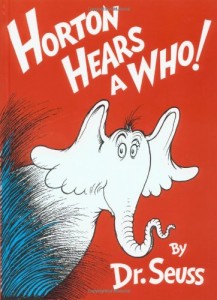
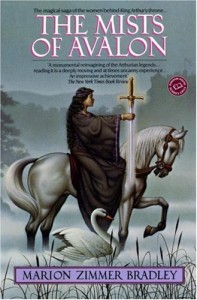
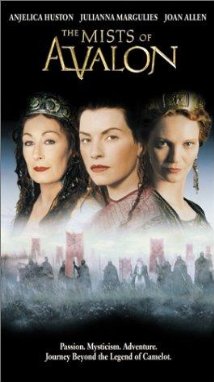
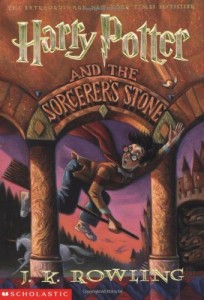

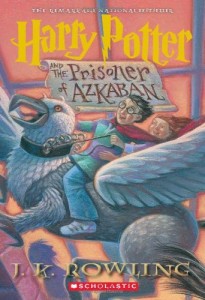
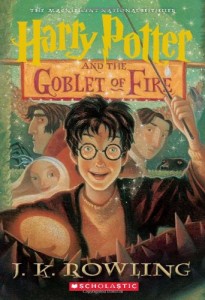

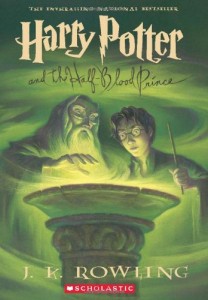
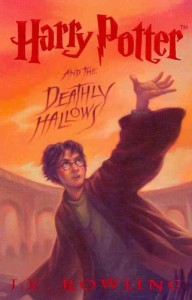
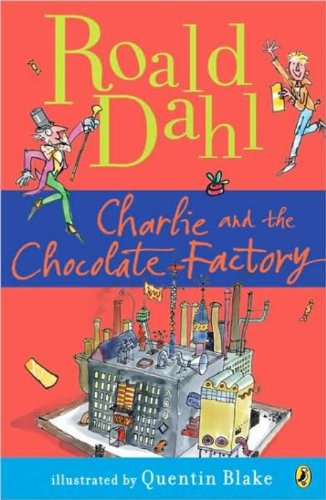

Recent Comments